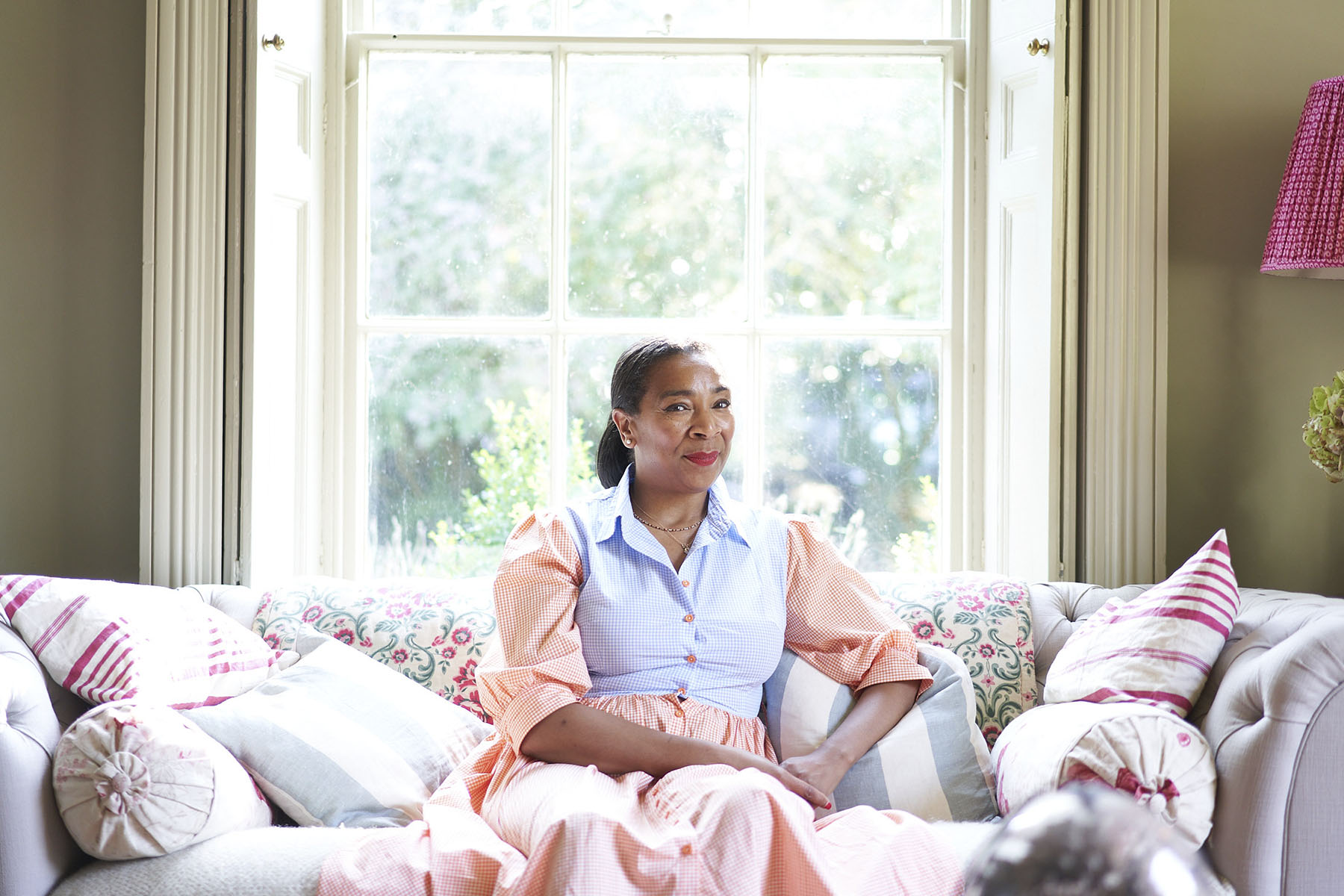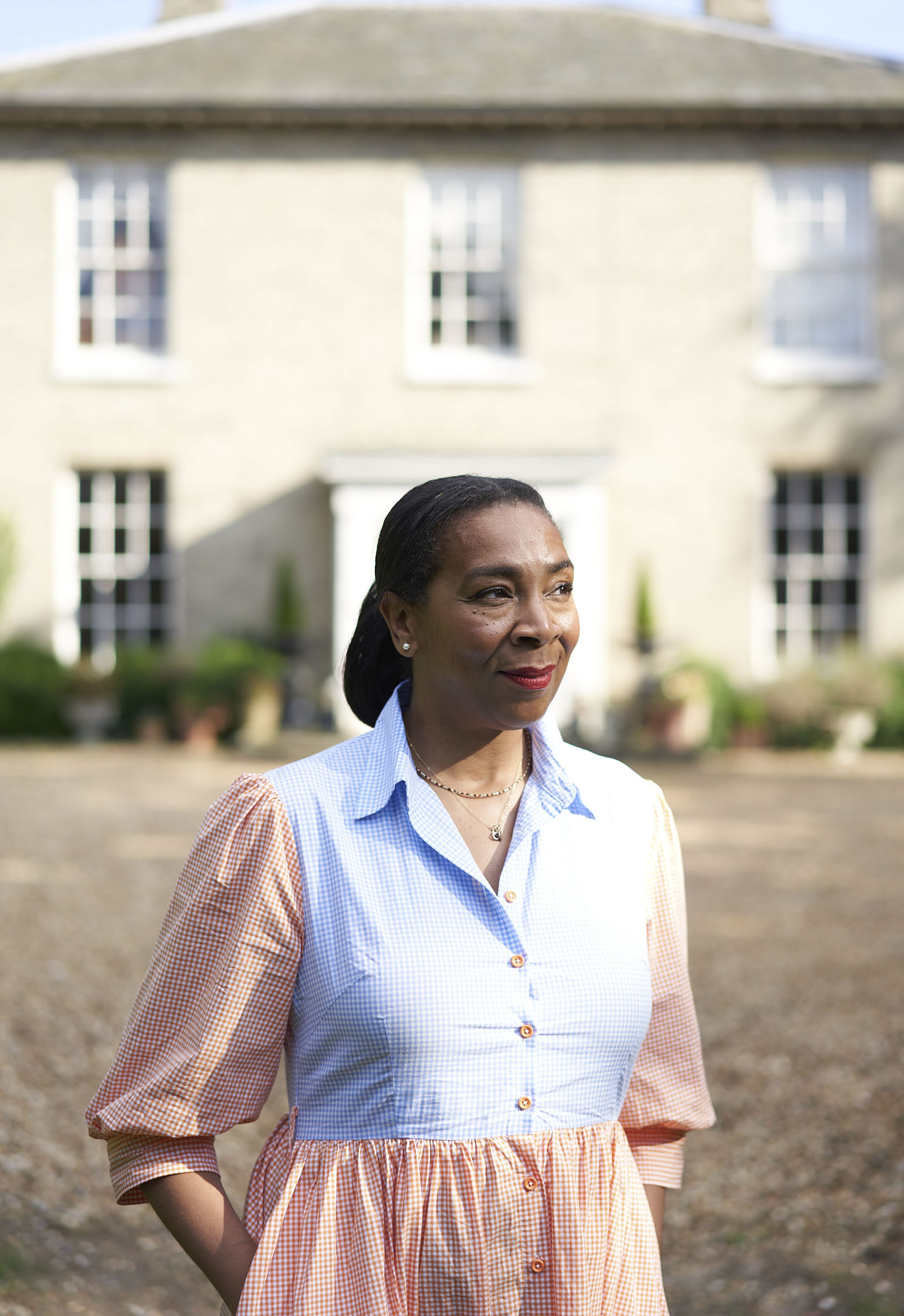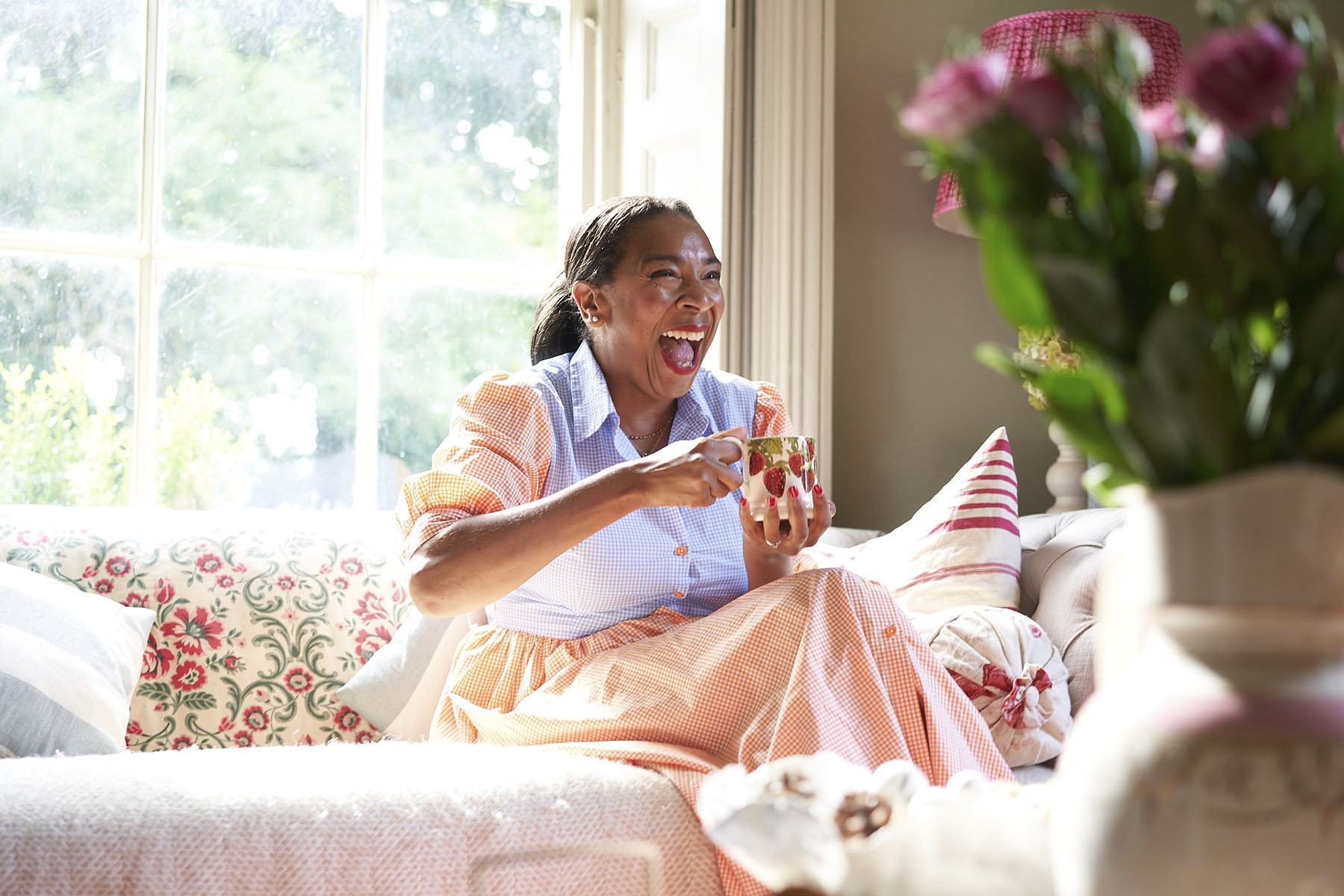
- Home |
- Search Results |
- Hill House Living: How Paula Sutton redefined a joyful life
In the afternoons, the way the light drifts through Paula Sutton’s sitting room window is little short of majestic. It bounces off the Georgian shutters, softens on the floral throw over her Chesterfield sofa. It sinks into the mass of comfortably squished cushions and settles, quite perfectly, on Sutton herself. We are having tea in one of Instagram’s most famous homes: Hill House, on the edge of a village in Norfolk. Her mug has strawberries on. I’m a bit scared to put mine down without a coaster.
Sutton – high cheekbones, slick of red lipstick, gingham frock befitting the warm late September day we’re enjoying – lives here, and has done for the past 12 years, documenting its thrifty renovation and furnishing through a blog and social media. A London escapee, she used to organise high-stakes photoshoots in far-flung locations for Elle magazine until, she says, “things came to a head". She was juggling three small children and a demanding job. "Something had to give, and we had to leave London.”
It’s a familiar narrative, but one that feels particularly piquant after a year when thousands of people decided to leave the city for a more steady, less stressful life. While many of us were staying at home and forced to think about the things that truly brought us happiness, Sutton had spent a decade doing just that. The result now exists in a fizzing spark of a book: Hill House Living: The art of creating a joyful life, a collection of recipes, home styling tips and stories from Sutton’s own life, intended to help us make ours more fun. It’s kindly persuasive: after reading it, I immediately messaged my upholsterer.
'I’m a firm believer that if you don’t like something, just turn over the page'
Sutton wrote it at the tail-end of 2020, a year she describes – somewhat mildly – as a “rollercoaster”. Her mother died on Valentine’s Day, having been given a leukaemia diagnosis that gave her just three months to live. Sutton went to Grenada, her parents’ home country, for the funeral. It prompted an unexpected, if life-changing, string of events.
Sutton started her Instagram account, @HillHouseVintage, around seven years ago, and in the gutting aftermath of her mother’s death it became an unlikely focus for her father. “It was this silly thing we were concentrating on to be able to just get through what was happening, which was basically getting my mother buried,” she explains. “For some reason, he got really into my Instagram. Every time my numbers went up a little bit, he got really excited.”
Sutton arrived back in the UK and walked straight into lockdown – and 100,000 followers. It galvanised her. “I thought, it’s a new stage in my career and it’s something really nice to take my mind off what’s been going on in my personal life.”

One Friday, a few weeks later, Sutton she’d gained 1,000 new followers in five minutes. Another five minutes passed, and she’d gained a further 40,000. “It started escalating,” she says, “and then it was just becoming ridiculous, and a bit scary.” A follower explained what was happening – she was in the middle of a Twitter storm. She didn’t, she tells me, even know what a Twitter storm was.
A journalist had shared one of Sutton’s photographs – Sutton sat on her lawn, in a frock, big smile – saying that it made her turn off Instagram forever. The tweet went viral and attracted a lot of bile towards influencer culture. It horrified her, Sutton said. But then something even more unexpected happened: “Black Twitter came to my defence,” Sutton says. “And it became a big thing.” @HillHouseVintage gained 300,000 new followers in a weekend, and ‘Auntie Paula’ – an affectionate nickname used by those followers who recognise her West Indian heritage and see her as “a wise, established older woman” – was born. Days later, the journalist called to apologise to Sutton, who recalls the whole incident with grace. “Really,” she surmises, “it’s a lesson not to pick on anyone. Nobody deserves it. I’m a firm believer that if you don’t like something, just turn over the page.”
Hill House is, of course, gorgeous, a symmetrical beauty of a Georgian house, well-loved with family life. She gives me the tour (“what a lot of people don’t realise is that it’s quite a small house”), urges me not to take off my shoes: “It’s grubby around the edges, fading here, peeling there, usually a dog flopping about,” Sutton says. “I wanted a very comfortable and easy home.” Outside, dahlias tower at head-height. Her garden office, where Hill House Living was written and Sutton’s creative work happens, looks out onto a Peter Rabbit-worthy veg patch.

But home has not always been this joyful – or this quaint. Sutton was born in Croydon, to parents who moved from the Caribbean in 1959 expecting a Jane Austen England, only to arrive to a series of bedsits and “a generation of ‘No Dogs, No Blacks’ prejudice”, she explains. Her mother, who feverishly collected Country Life magazine, passed down her affinity for English country house style.
Sutton’s optimism, she says, comes from her parents. “I could have just got off a boat from Grenada in 1959 and had someone spit at me,” she says, “I have a daily reminder that I am more fortunate than I would have been 60 years ago. My parents are very positive people. You know that you’re going to kill people with kindness, it’ll be okay, and I have every confidence that it’ll be alright.”
Still, Hill House Living dedicates a chapter to race and country house style, an important – and perhaps unexpectedly political – inclusion in a lifestyle book. “The irony is that this style reflects an era in which a person with my skin colour would probably not have felt either relaxed, comfortable or welcome,” she writes. “My mother’s interest [in English country houses] meant it was nothing out of the norm: she was a firm believer that people should live out their dreams and be unafraid of what other people think – so I did just that.”
It’s this ebullient spirit that persuaded Sutton to rediscover her identity, one that’s made her so adored online, after finding herself at a loss upon moving to the countryside. “I didn’t want to bring any attention to myself. I wanted to have some quiet space to re-evaluate my life, to think about what was coming next and what was happening,” she says. “And that turned into something a bit sad. I felt like I’d lost my way, and it was reflected in my clothes. I started wearing the drabbest clothes I could in an attempt to disappear. I thought it would give me healing time, but it just made me more miserable.”
'I realised that it didn’t matter; I started to care less about whether I stood out, or whether it would look odd if someone came and found me in the garden in a big dress.'
That’s when, she says, she started pulling out the frocks – the circle skirts and frilled collars and ruffled aprons. She’d wear them to garden, to the shops, to walk the dog – with wellies, natch. “Dressing up a little bit started making me feel happy,” she says. “I realised that it didn’t matter; I started to care less about whether I stood out, or whether it would look odd if someone came and found me in the garden in a big dress.”
What you see with Sutton, with Hill House, is really what you get: a woman who has truly found what makes her happy, and hasn’t been afraid to pursue it. Beneath the frippery lies a quiet rebellion against subscribing to social convention. She describes leaving London, and all of its competitive trappings, as “almost like a rebirth”, one which paved the way for a level of self-fulfilment and simplicity that has left her happier than ever. “I have so enjoyed getting older,” she says, “and if there is anything I can do to make people feel better about the ageing process, or living positively as they grow older, I think that's a great thing.”
The lessons Sutton lives by, which are folded into the pages of her book, apply equally well to vintage as they do to life – at any age. Make the most of what you have, enjoy what you’ve got, and surround yourself by things that bring you joy. It’s advice both eternal and timely. And, as the train rattles back from Norfolk into London rush hour, doom-laden headlines in the ether, Sutton’s guide to life has never felt more necessary.
What did you think of this article? Email editor@penguinrandomhouse.co.uk and let us know.
Image: Stuart Simpson/Penguin